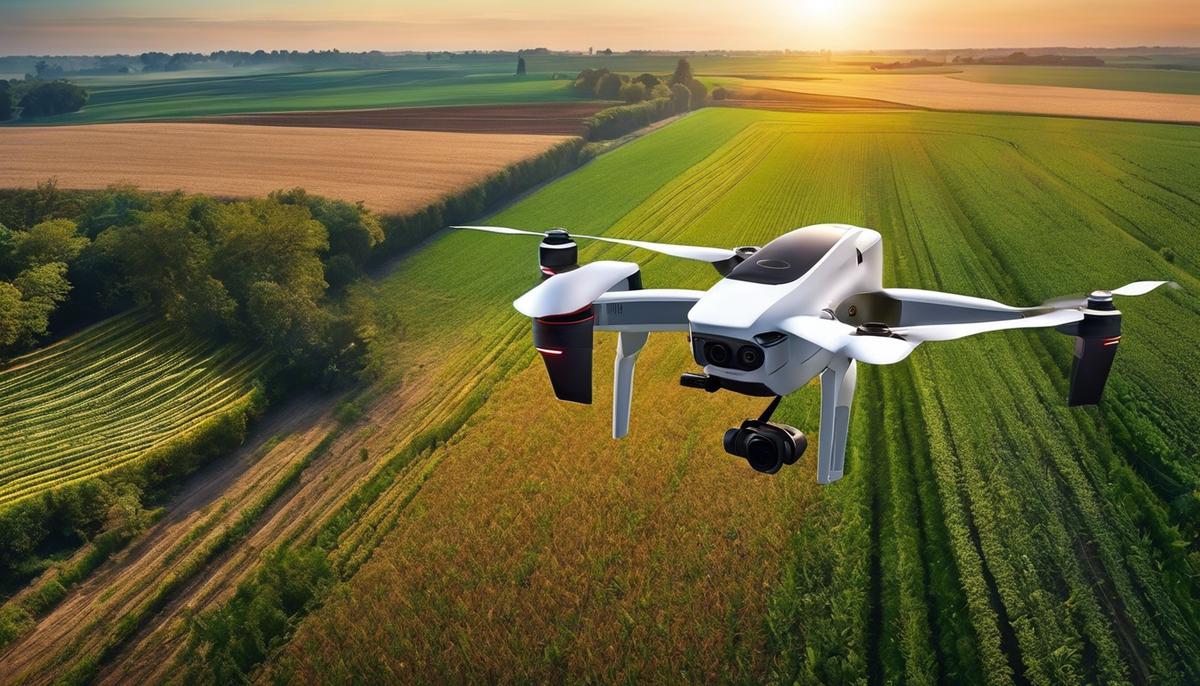

Agridisk
Egypt - Alexandria
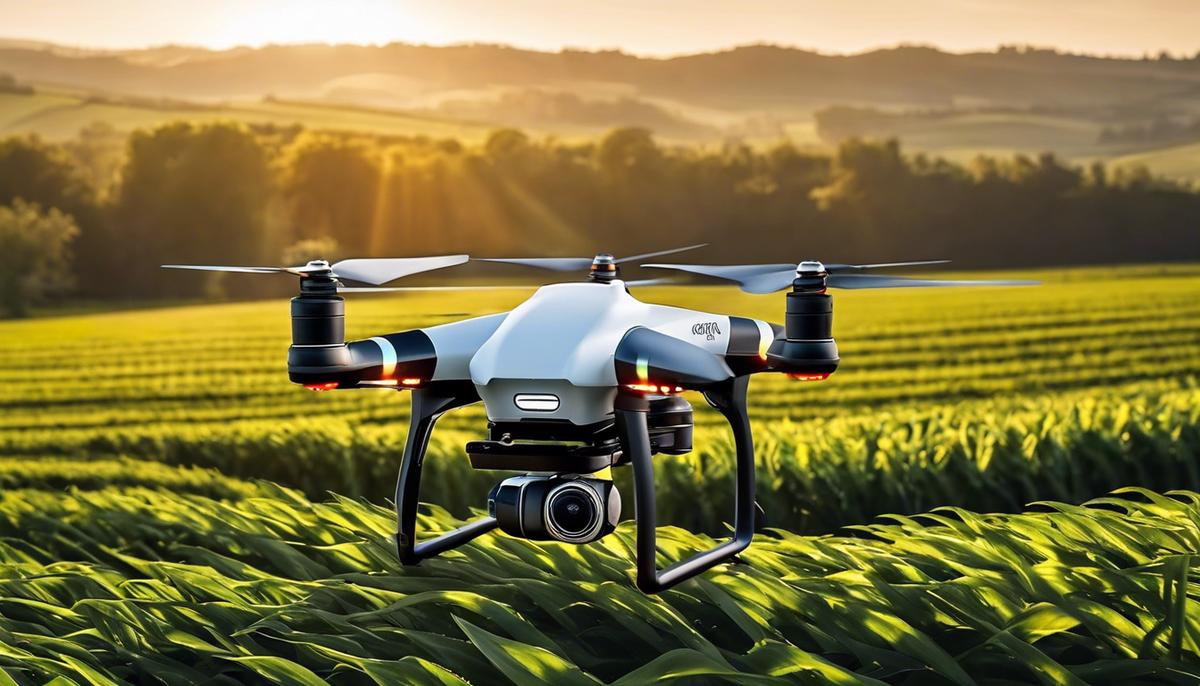
Agriculture drones | The benefits of using ag drones for precision agriculture
Description: In the wake of rapid technological advancements, the frontier of agriculture is being reshaped by the advent of agricultural drones. Varying in design and specification, these devices offer a wealth of benefits via incorporation of unique features such as sensors, cameras, GPS modules, and flight controller systems. Enhanced through the potential of machine learning and Artificial Intelligence, agricultural drones promise an unprecedented level of data interpretation and strategic planning. Yet, they owe their functionality also to the complex principles of aerodynamics. Simultaneously, their increasing presence in the field of farming, whether it’s crop monitoring, health assessment, irrigation management, pest detection, or soil analysis, is redefining approaches towards agricultural management and efficiency. However, as with all technological advances, understanding the attendant regulatory frameworks and ethical dimensions is crucial for their appropriate and responsible deployment. The burgeoning landscape of digital agriculture signals a transformation of the traditional farming process. One standout innovation the farming community has seen is the advent of agriculture drones, a technology application not traditionally associated with the farming milieu. They have emerged as a critical tool, significantly impacting and improving various farming activities such as crop monitoring, irrigation management, and pest control. Agriculture drones, or unmanned aerial vehicles (UAVs), are equipped with numerous technological parts that work in unison to ensure their robust functionality. The critical technological components encompassing an agriculture drone could be categorized into three key fronts: aerial platforms, payload capabilities, and data processing capabilities. Starting with the aerial platforms, fixed-wing and multirotor drones are the two common types. Fixed wing drones excel in covering large areas and providing a broader range of crop data, often preferred for field mapping and crop health assessment. In contrast, multirotor drones are typically used for precise applications such as targeted spraying, showcasing their flexibility in confined spaces. Delving into the drone's payload capabilities, a variety of sophisticated sensors define the data accumulation and interpretation methods. For instance, multispectral sensors collect data by capturing light in specific bands—including non-visible ones such as the infrared—that can indicate crop health and yield potential. LIDAR sensors map physical features of the farmland and even ambitious ventures, like 3D modeling, can be undertaken. Thermographic sensors, on the other hand, are primarily utilized to monitor irrigation systems by detecting temperature variations. To convert this collected data into actionable insights, sophisticated data processing capabilities are integral. This is where pivotal technologies, such as Geographic Information Systems (GIS), Artificial Intelligence (AI), and the Internet of Things (IoT) come into play. These technologies work in harmony to analyze the gathered data, identifying patterns, predicting crop diseases, and making recommendations to enhance farming practices. Interaction with other IoT devices also ensures effective communication and implementation of the derived strategies. Additionally, they are characterized by autonomous operations which, interestingly, is another contributing factor to their efficacy. Programmable flight paths enable precise and repeatable patterns of data collection, thus increasing overall efficiency and reducing the strain on human resources. However, their effectiveness shouldn't be considered without addressing potential challenges. Factors like weather conditions, signal loss, and potential cyber threats can impede drone operations. Hence, ongoing research points toward the development of drones with improved weather resilience, robust communication systems, and advanced cybersecurity measures. Thus, agriculture drones, fortified with advanced sensors, robust data analysis capabilities, and programmable autonomy, are revolutionizing the farming landscape. Their use is gradually illuminating paths to approach traditional farming hurdles in a novel, data-driven manner—quintessential evidence of the merging of technological prowess and timeless agricultural practices. As advancements continue to permeate every nook and cranny of human existence, precision agriculture offers a unique application of drone technology. Not only do these unmanned aircraft systems provide a new perspective on crop fields from aerial vantage points, they also bring valuable data-driven insights into farmers' hands, enabling targeted strategies that ensure optimal crop growth and yield. Furthering exploration of this genre of technology, it's pivotal to decipher how drones catapult precision agriculture to higher planes of efficiency. Drones, in this particular context, are inherently equipped to perform detailed farm surveillance, monitor crop growth, and aid in mapping terrain. However, it is their bespoke blend of functions tailored for agriculture that distinguishes them from regular drones. Crop Health Assessment and Management spearhead the practical applications of drones in precision agriculture. Drones equipped with advanced photosynthetic sensors capture data reflecting plant health, providing information on crop stress even before it becomes visible to the naked eye. This empowers growers to make data-driven decisions on watering, fertilization and pest management in real-time, giving them the tools necessary to cultivate healthier crops, reduce wastage, and ultimately boost farm productivity. Furthermore, drones play a vital role in Irrigation Management. Given the significance of effective water usage in farming, drones equipped with thermal cameras can detect variations in evaporation rates across fields. These data empower farmers to employ astute irrigation strategies. By identifying areas of water stress or over-irrigation, farmers can ensure even distribution of water, increasing crop yield while conserving our finite water resources. Another prominent application of agricultural drones is in Yield Prediction and Optimization. Drones outfitted with multispectral sensors chart out Normalized Difference Vegetation Index (NDVI) maps, which measure plant health using a ratio of the light absorbed and reflected by crops. Using these maps, farmers can anticipate yield, enhancing their planning strategies for harvest and market supply, reducing uncertainties, and optimizing revenue. The promise of drones in precision agriculture extends to Crop Insurance and Damage Assessment. Following weather extremes or pest outbreaks, drones can swiftly map and assess affected areas. Precise damage estimation aids in processing claims swiftly and transparently, ensuring farmers are duly compensated without undue delays. Lasty, but decidedly not of lesser importance, is the use of drones in precision soil and field analysis. Drones provide geo-tagged aerial images that form the basis for early season soil analysis, creating an understanding of the field down to its minuscule variations. This information assists farmers in planning seed plantation patterns to optimize crop yield. As agriculture pivots towards more sustainable and efficient practices, drone technology will undeniably form an integral cog in this mechanization. Despite challenges such as regulatory constraints and initial apprehension, the benefits render drones essential components of a burgeoning, high-tech agricultural landscape. Precision agriculture is shifting from an industry buzzword to a tangible reality, where drones take center stage. By providing data-backed, real-time insights and predictive analysis, drones ensure healthier crops, optimized resource usage, and overall improved farm productivity. As we delve deeper into the realm of drone usage in agriculture, navigating the intricate labyrinth of regulations becomes indispensable. Enshrined in the Federal Aviation Administration (FAA) guidelines under Part 107, these directives act as a guiding beacon for the safe and efficient operation of unmanned aircraft systems (UAS) in agriculture. The rules stipulate that drone operators must maintain a visual line of sight with the drone or employ a visual observer to maintain an unaided visual contact with the aircraft. In addition, these aircraft must not operate over any individuals not directly participating in the operation or under a covered structure. Moreover, these commercially used drones must not exceed a maximum ground speed of 100 mph or an altitude of 400 feet above ground level. However, within the regulatory framework lie certain provisions for waivers that grant aeronautical discretion, if safety can still be assured. These waivers enable operators to conduct flights at night, over people, beyond visual line of sight, and against other standard operational parameters. It is pertinent to note that the FAA necessitates passing an aeronautical knowledge test facilitated by an FAA-approved knowledge testing center, leading to a Remote Pilot Certificate. Moving from legal to ethical considerations, the usage of drones in agriculture invites several paramount issues. Data privacy emerges as one of the prime ethical concerns. The collection of data via drones can lead to acquisition of sensitive information, potentially crossing the boundary into invasiveness. Ensuring that data privacy rights are respected is a major ethical expectation towards drone usage in agriculture. Environmental implications also act as a key facet of ethical deliberation. Even while drones drastically reduce human involvement and potentially minimize the carbon footprint, it remains crucial to ponder on the lifecycle impacts of drones. From their manufacturing, use, and disposal, indelible environmental implications may arise, underlining the need for sustainability in this technologically advancing sector. On a human level, the transition to drone-led agriculture can pave the way for job substitutions from humans to machines, triggering ethical issues regarding the impact on rural economies and livelihoods. Balancing technological advancement with workforce integrity presents a tough, yet necessary, ethical challenge. In our relentless quest to push the boundaries of agricultural productivity, it becomes incumbent upon us to harmoniously dovetail technology with regulation and ethical vigilance. As with any radical technological overhaul, ensuring just and beneficial deployment of drone technology in agriculture necessitates a conscientious balancing act between progress, legality, and ethical responsibility. Ultimately, while agricultural drones mark a profound shift in farming operations and landscape, they invite an equally intricate web of guidelines, laws, and regulations. This varying regulatory landscape across international territories necessitates careful navigation, informed understanding, and constant updating, to ensure compliance. Furthermore, drones escalate a host of ethical concerns and dilemmas around privacy and data security. These not only require immediate attention and redressal but also anticipatory foresight for the potential challenges the future advancements might bring. Therefore, the confluence of technological potential and requisite discretion characterizes the future of agricultural drones, promising a paradigm shift in agrarian practices while demanding conscientious governance and ethics. There's a revolution in agriculture. It's not about working longer or working harder but about working smarter, with a little help from above. Drones, once considered the playground for tech enthusiasts and videographers, are now becoming the farmer's best friend for precision agriculture. With the development of complex sensor technologies, autonomous navigation, and high-resolution imaging, these drones are able to examine, monitor, and analyze crop conditions from a bird's eye view, providing farmers with valuable data pivotal for making informed decisions. The potential impact of this technology on reducing operational costs, boosting crop yields, and minimizing environmental footprints is substantial, catalyzing a shift toward sustainable and efficient farming practices. This is not science fiction; this is the present and future face of precision agriculture. In the abundant spectrum of current technological innovations, the application of drone technology in agriculture - particularly, precision farming - exhibits a truly revolutionary dimension. The emergence and subsequent refinement of precision farming techniques have been intimately linked with the rise of intelligent, application-specific drones designed for the manifold tasks characteristic of modern agriculture. A profound shift is noted in the application of drone technology from rudimentary assistance in crop monitoring and aerial mapping to sophisticated functions that now involve crop management, irrigation planning, and highly effective pest control methodologies. One of the pivotal areas of innovation is the development and integration of multispectral imaging technology within drone systems utilized in precision farming. In essence, multispectral imaging empowers drones with the potential to analyze an assortment of agricultural parameters, including crop health, moisture content, and nutrient deficiencies with relative precision. By converting sunlight into data through the use of different wavelengths, near-infrared, and red-edge bands, more accurate prescriptions for variable-rate fertilization, crop management, and even optimized irrigation systems are now feasible, ultimately leading to enhanced crop yield. Advancements also abound in drone hardware. Light weighted drones equipped with extended battery life, providing up to 60 minutes of uninterrupted flight, prove valuable for larger tracts of land offering more comprehensive and quicker data. Integrating thermal camera sensors adds yet another layer of sophistication, offering valuable nighttime imaging to monitor livestock and detect signs of crop diseases that may only manifest under particular temperature and light conditions. Moreover, significant strides are being made in employing intelligent software that increases the drone's utility tenfold. Leveraging artificial intelligence and machine learning, farmers can not only collect data but analyze it in a more interpretable and actionable form. Predictive analytics now allow growers to anticipate potential outbreaks of diseases or pest infestations before they happen, working as an early warning system. Looking at the whole picture, innovations in drone technology are illustrative of a broader paradigm shift in agriculture. Personalized plant care, on-demand irrigation, targeted pest control, and just-in-time crop management techniques, enabled by drone technology, confront the challenges of modern agriculture with unrivaled precision and efficiency. This ongoing revolution in precision farming through advanced drone technology is profoundly shaping the landscape of agricultural practices, impressively bridging the gap between cutting-edge technology and Earth's oldest profession. Alluding to an enhanced and refined vision of our future in agriculture, these technological innovations delineate a promising roadmap where sustainability and productivity exist in a glorious symbiosis. It is a brave new world, indeed, with our steadfast companions - the drones - leading the way. The sine qua non of precision agriculture, drone technology, has come to be inextricably linked with a voluminous gathering and adept interpreting of farm data. In this scheme, drone-based data acquisition and interpretation is enabled by an assortment of high-end technologies, which are mutually complementing in their functionalities. To understand the mechanism through which drones efficiently gather and interpret data, one must delve into the system of sensor technology that they utilize. These technological components include the LiDAR sensor, the hyperspectral and multispectral sensors, and RGB cameras which facilitate precise data gathering. A Light Detection and Ranging (LiDAR) sensor, for instance, creates detailed topographical maps by emitting pulses of light to the ground and measuring the time it takes for the light to return to the sensor. With this data, attributes such as ground elevation, crop height, and slope of the field are calculated, proving integral to precise irrigation and drainage planning. On the other hand, a hyperspectral sensor records the visible and near-infrared spectrum, each offering a unique ‘spectral signature’. This can be correlated with certain chemical and physiological properties in plants, revealing information such as the presence of certain diseases, nutrient deficiencies, crop stress, or yield prediction. Moreover, multispectral sensors capture data on specific wavelengths of light, enabling further discernment of crop health indicators along with soil health. In contrast, RGB cameras, which capture images much like a traditional camera, are useful for spotting easily discernible issues like flooding or plant lodging. The large amounts of data procured by the aforementioned sensors necessitate equally sophisticated data processing and interpretation mechanisms. This is addressed by incorporating artificial intelligence (AI) and machine learning (ML) algorithms into drones’ software. These advanced algorithms can interpret complex sensor data and convert it into actionable insights for the farmer. For example, the data produced by the multispectral sensor can undergo optimization via machine learning algorithms, along with delineating precise indices of crop vigor. Similarly, LiDAR data can be processed using AI for precise terrain modeling. In addition, cloud-based data processing allows for a virtually limitless computational capacity, significantly enhancing the drone's efficiency in interpreting comprehensive data sets. It also offers easy accessibility, meaning the farmers can access the insights derived from the system from anywhere. The future beyond the horizon appears to be heralding an era of ‘farming data’, where the key to optimized agricultural productivity lies in the meaningful synthesis of troves of data. Increasingly sophisticated drones, enhanced by the ceaseless march of progress in machine learning and AI, promise to revolutionize precision farming by maximizing data gathering and interpretation capabilities. This landscape of digital agriculture, where crops virtually communicate their needs, moves us closer to the idyllic vision of sustainable futuristic farming. Let us move forward and analyze more profound aspects of drone technology transforming agriculture. The agricultural drones can be considered as integral tools for producers, delivering significant environmental and economic advantages. A closer view into drone-enabled resource efficiency opens up the prospect of substantial economic profits for farm operations. Primarily, the traditional manual method of surveying crops and livestock is time-consuming, labor-intensive, and above all, less accurate. Drones, equipped with advanced imaging and sensory capabilities, can significantly simplify this process, providing detailed real-time data, saving time, and improving accuracy. Additionally, drones can help reduce the excessive use of resources such as water, fertilizers, and pest control chemicals, leading to significant cost savings for farmers. Furthermore, drones have direct implications for precision spraying – a technique that precisely targets pesticide and fertilizer application. Leveraging this technique, farmers can minimize the volume of chemicals entering the natural water systems, mitigating detrimental environmental impacts. The role of drones in aiding carbon sequestration merits special attention. Good agricultural practices, such as cover cropping and reduced tillage, contribute to carbon sequestration, enhancing soil health and fertility. Larger agricultural drones can sow seeds for cover crops across vast fields almost instantaneously— their speed and precision unmatched by traditional equipment. This approach could expedite the process and encourage farmers to adopt more climate-friendly techniques. A view into the concept of ‘smart farming’ through active plant monitoring is also compelling. Integrated with high-powered cameras and sophisticated imaging sensors, drones can collect high-resolution images. Beyond surface observations, drones can access each plant on the field, facilitating customized care, reducing waste, improving efficiency, and thereby, escalating profitability. Drones can help alleviate the pressure brought on by climate change— fluctuations in temperature, increasing weather vagaries, and unpredicted shift in seasons. Drone-collected data can be invaluable in predicting weather patterns and understanding their implications for crop health. Farmers can confidently make informed decisions in terms of planting and harvest schedules, helping secure their yields and financial stability. The enthusiasm for drone technology in agriculture goes beyond settled farming practices— it holds promise for pastoral herding too. Drone herding has been found to cause less stress for animals than traditional herding methods. It can facilitate more efficient control of livestock, making it easier to avoid overgrazing and associated soil degradation. This can help enhance the sustainability of pastoral operations, ensuring a better co-existence with local wildlife and reduced human-wildlife conflict. In conclusion, it is clear that drones offer a purposeful convergence of economic and environmental benefits in the realm of agriculture. This potent blend of efficiency, profitability, sustainability, and environmental stewardiness paves the way for the remarkable future of ‘smart farming’. The rise of drone technology in agriculture undoubtedly marks a significant step forward on the path to creating a more sustainable and resilient global food system. Embarking on the second part of this in-depth exploration of drone technology spiraling the evolution of precision agriculture, the article pivots towards drone-enabled applications that slash through conventionality. While the past focal points unfurled the transformation of drone hardware and software and the enhancement of systemic efficiency, a profound delve into specific applications and the environment-economic impact forms the core of this discourse. One of the resounding impacts of adopting drone technology in agriculture is the precision spraying capability that drones possess. Precision spraying fuses advances in drone technology, plant biology, and chemical mixes, enabling a highly targeted approach that reduces the overall volume of fertilizers and pesticides that are applied to crops. By doing so, it not only curtails the negative environmental impact but also fosters healthier crop growth. Furthermore, drones now find an added utility in strategies aimed at Carbon Sequestration. Techniques such as cover-cropping and reduced tillage largely depend on punctual application and understanding of the ground condition, making the drone an indispensable ally. This not only contributes towards achieving the goals of sustainable farming but also helps tip the climate change scales. From a perspective that blends technology with intuitive problem-solving, we journey into the realm of 'smart farming'. Here, drones become guardians, non-intrusively monitoring plant health actively. Their data keep the farmers aware of every minor change in the health of crops, enabling them to proactively safeguard against potential crop failures. Even weather, though inherently unpredictable, succumbs to the resolving power of drones. Aggregated data collected by drones over vast expanses of farmlands have now gained the potency to predict localized weather patterns. Backed up with machine learning algorithms, these weather models provide farmers a valuable tool for making informed decisions. Surprisingly, drone technology waives its magic even in the relatively low-tech sector of pastoral herding. Spatial tracking and behavior analysis of livestock herds conducted by drones drives operational efficiency and reduces environmental footprints. This again illustrates the exemplary role of unfolding drone technology within the tent of sustainable agro-practices. In a quest to grasp the overall impact, it is crucial to perceive the balance struck between the economic and environmental perks. Drones are creating an agricultural production system that is not just efficient and profitable but also resilient and eco-friendly. Their ability to increase yield and decrease input costs, combined with their competence in tackling climate change related challenges, marks them out as a cornerstone in creating a sustainable global food system. The exploration through these spheres unmasks the ubiquitous essence of drone technology and reaffirms the assertion of its pivotal role in shaping precision agriculture. The onus now lies in the adaptability of this technology, which could potentially change the face of the world's most ancient industry - Agriculture. Zooming out, the advent of drones in precision agriculture is more than just an incremental advancement in farming technology. It's a pivotal game changer poised to redefine the landscape of agriculture all over the world. Whether it's through minimizing resource wastage, safeguarding environmental health, or forecasting crop yields more accurately, drone technologies promise a significant leap toward sustainable and efficient farming. In a rapidly growing world grappling with dwindling resources and climate uncertainties, these benefits are not just crucial, but ultimately indispensable. While challenges remain, the triumphs and potential of drone technology sound an optimistic note: what we once dreamed about, we are now actualizing, substantiating the promise of a brighter, sustainable future in farming. And as we navigate through the soaring horizons, there's no looking back - the future of agriculture, quite literally, is up in the air.Agriculture drones
Technological Specifications of Agricultural Drones
A Dissection of the Technological Components of Agriculture Drones: Unveiling Their Effectiveness in Modern Farming
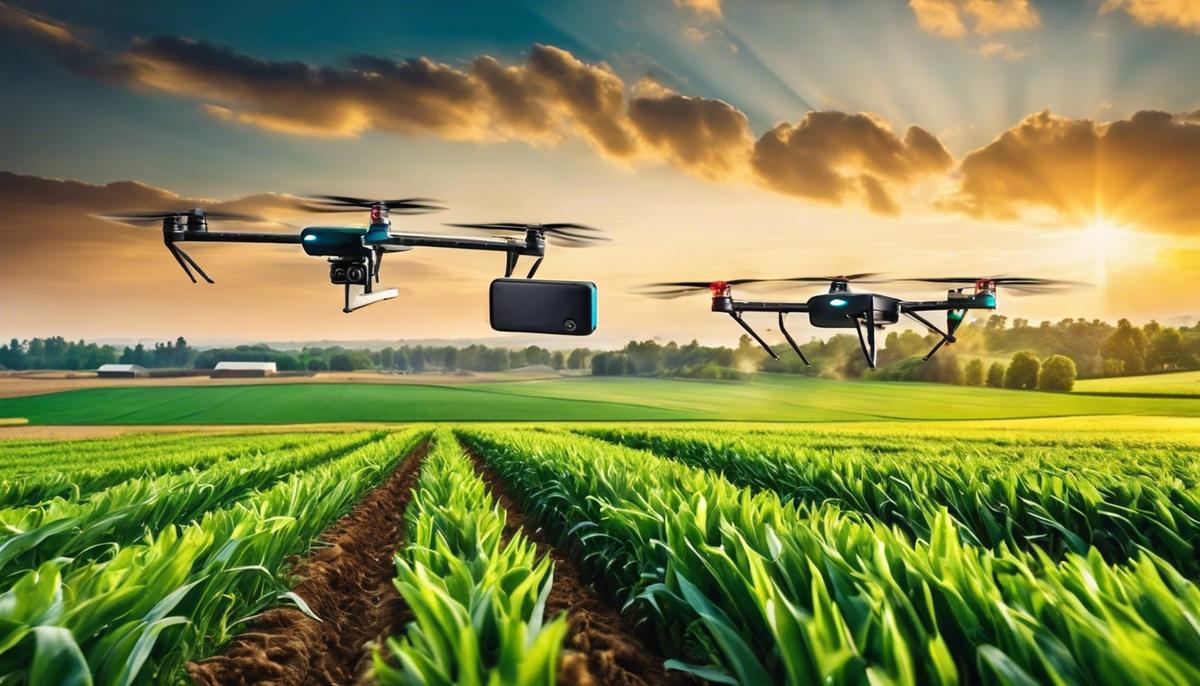
Agricultural Applications of Drones

Regulatory Landscape and Ethical Considerations of Drone Usage in Agriculture

The benefits of using ag drones for precision agriculture
Technological Advances in Agricultural Drones
The Vanguard of Agricultural Innovation: A Close Look at Recent Technological Strides in Precision Farming Drone Technology.
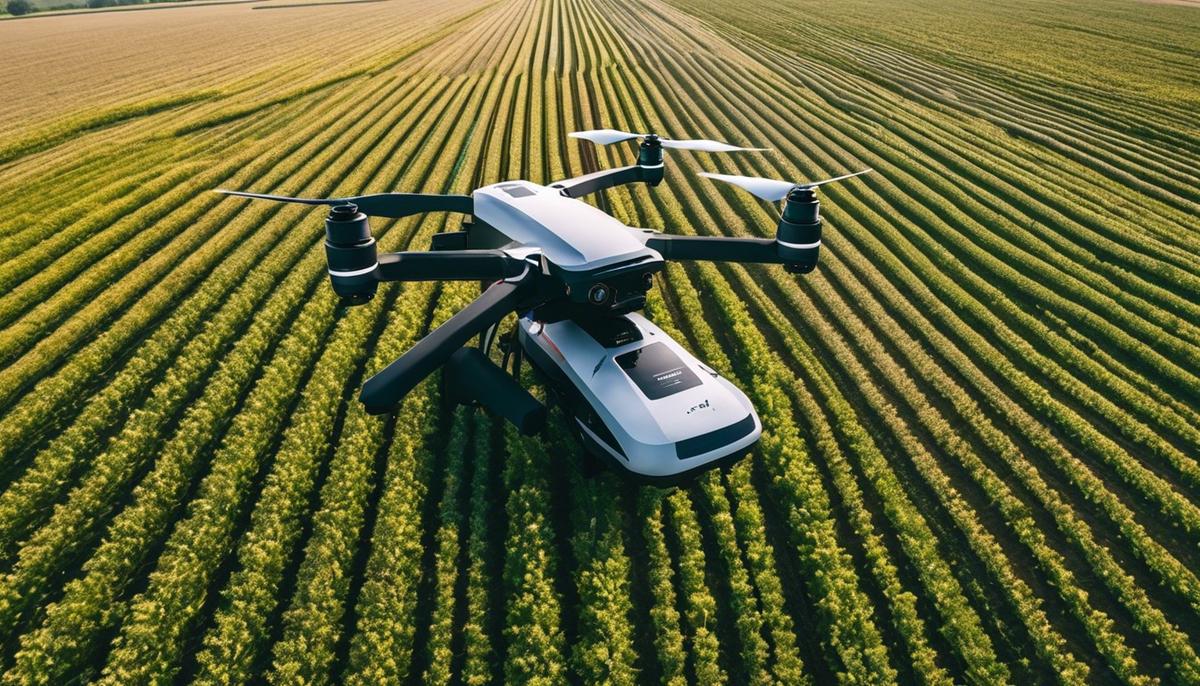
Data Acquisition and Analysis Using Drones
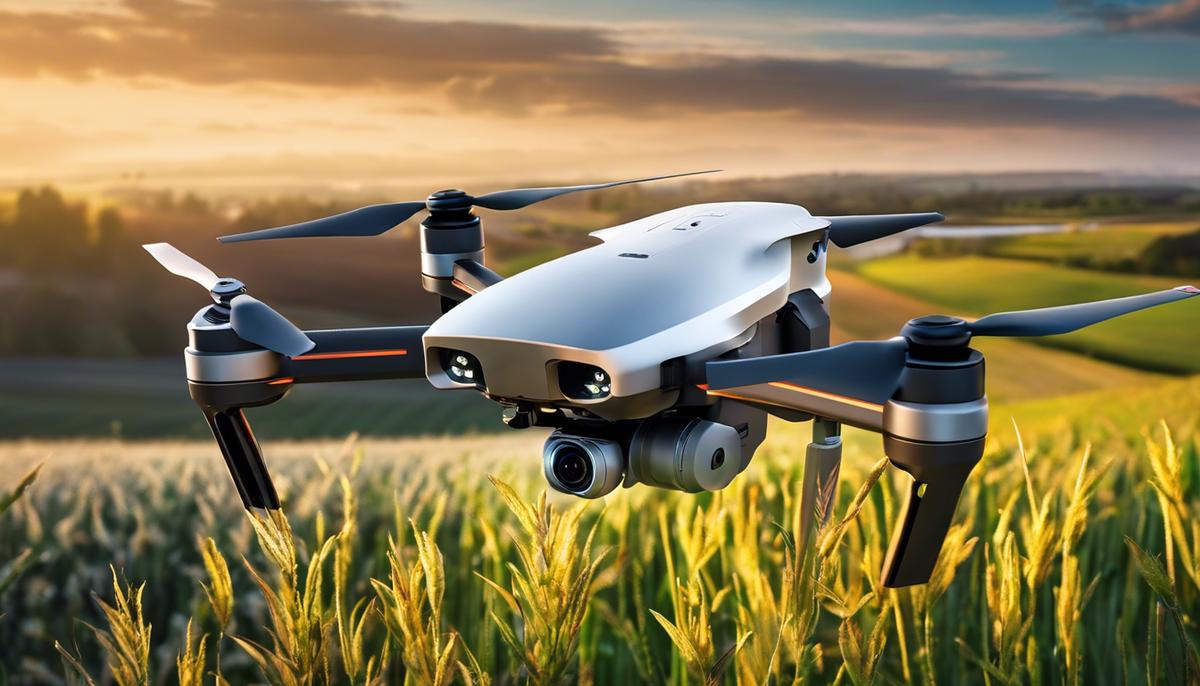
Economic and Environmental Impact of Drone Usage in Agriculture
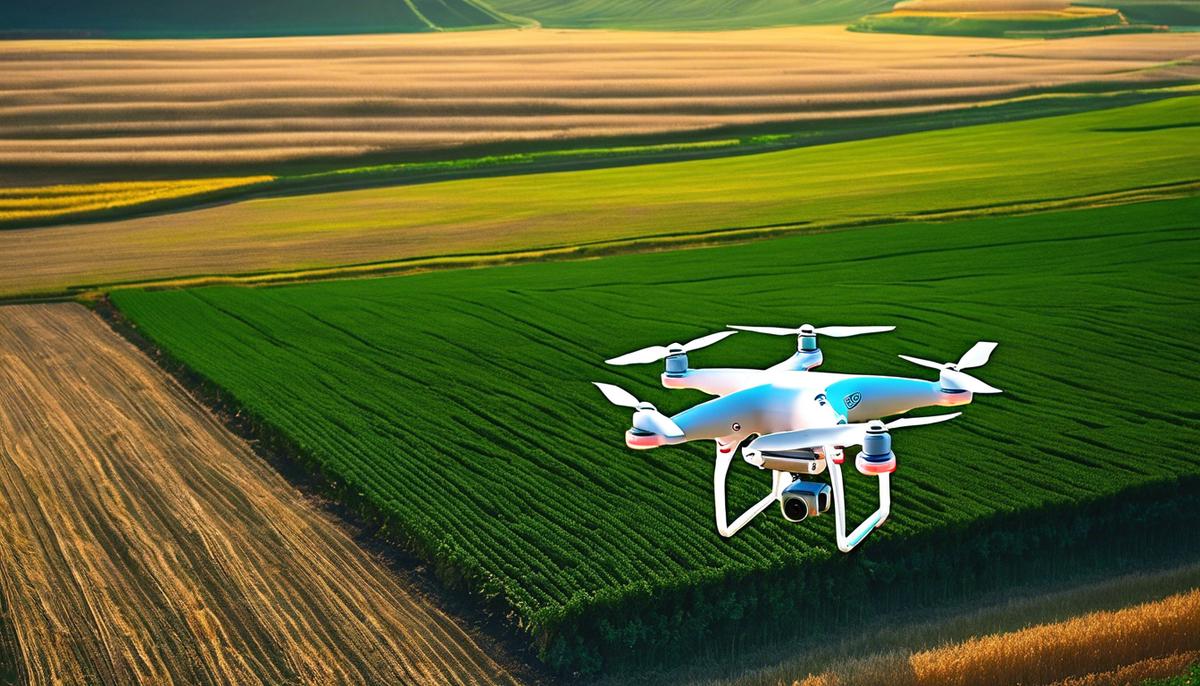
Future of Drones in Precision Agriculture
